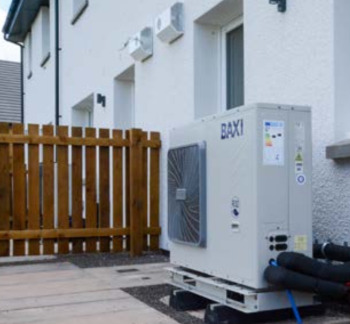Harnessing Renewable Energy: Exploring the Wind Turbine Composite Materials Market
Lot of trying and testing has been done with regards to power generation from the greener sources. Wind power has emerged as a notable source of power generation on the global front in the recent past. To support it with statistically, it can be seen that, as per IEA 108 GW of energy was added to the world, with the help of wind in 2020. This number was twice the figure attained in the preceding year. This huge step in the uptake of wind power would not have been possible without the use of high-tech materials, tis article sheds some light on why composites play an important role.
Contents |
[edit] Composites are Essential Ingredient for Wind Power
The most common design of the wind turbines is the one which has three blades rotating around a straight axis. The surface of the blade resembles an aeroplane wing, developing lift with air flowing over it. This pressure causes the blades to turn, spinning a shaft, which is connected to a generator. This converts wind’s kinetic energy into electricity.
Blades are longer through the advancement of global materials technology. The reason, it is preferred to have longer blades of wind turbines is that larger turbines have improved efficiency than the ones with smaller blades. All the associated costs are similar to the smaller turbines, but the efficiency increases. Furthermore, the larger blades can tap into the stronger winds at higher heights.
These long blades have to stand tall for catering to demanding performance requirements. They should be stiff, strong, lightweight, and durable. Composites has all the qualities to become a raw material for the wind turbine blades.
[edit] What Composites are Used in Wind Turbines?
Turbine blades have got different parts. Internally, they have a beam for carrying load and provide solidity. This is attached to the two halves of the outer shell, providing the blade its shape.
The key t material in the blades is glass fibre strengthened polymer, frequently retaining epoxy resin or polyester. This is often called by the name, fibreglass, this combines strength and toughness with lightweight, perfect characteristics for this use.
The parts of the blades that are subject to much stress are often also made from carbon fibre reinforced polymer. As opposed to glass fibre, the latter is, stiffer, stronger and lighter. It is also a good conductor of electricity and its stiffness can decrease longevity. Due to these reasons, fibreglass is mainly used in the construction of wind turbine blades.
At present, there are methods for combining these fibres in the same polymer for creation of a hybrid material, which has advantages of carbon fibre without too much cost inflation. Researches are being directed into adding carbon nanotubes to the mix, which is another way to enhancing durability and strength of the wind turbine blades.
The increasing wind generation capacity all over the world is directly proportional to the growing demand for wind turbine composite materials, all over the globe.
[edit] Related articles on Designing Buildings.
- Allowable solutions.
- Biomass.
- Carbon fibre.
- CHP.
- Domestic micro-generation.
- Earth-to-air heat exchangers.
- Energy storage.
- Feed in tariff.
- Fuel cell.
- Geothermal energy.
- Geothermal piles
- Ground energy options.
- Ground pre-conditioning of supply air.
- Ground source heat pumps.
- Hydroelectricity.
- Large scale solar thermal energy.
- Renewable energy.
- Renewable heat incentive.
- Solar photovoltaics
- Solar thermal systems.
- Sustainability.
- Sustainable development: energy challenge.
- The Future of Electricity in Domestic Buildings.
- Thermal labyrinths.
- Tidal lagoon power.
- Wind Energy in the United Kingdom.
- Wind energy.
- Wind farm.
- Wind turbine.
- Windmill.
- World leaders urged to embrace wind energy.
- Zero carbon homes.
- Zero carbon non-domestic buildings.
[edit] External references.
https://www.psmarketresearch.com/market-analysis/wind-turbine-composite-materials-market
Featured articles and news
Grenfell Tower Principal Contractor Award notice
Tower repair and maintenance contractor announced as demolition contractor.
Passivhaus social homes benefit from heat pump service
Sixteen new homes designed and built to achieve Passivhaus constructed in Dumfries & Galloway.
CABE Publishes Results of 2025 Building Control Survey
Concern over lack of understanding of how roles have changed since the introduction of the BSA 2022.
British Architectural Sculpture 1851-1951
A rich heritage of decorative and figurative sculpture. Book review.
A programme to tackle the lack of diversity.
Independent Building Control review panel
Five members of the newly established, Grenfell Tower Inquiry recommended, panel appointed.
Welsh Recharging Electrical Skills Charter progresses
ECA progressing on the ‘asks’ of the Recharging Electrical Skills Charter at the Senedd in Wales.
A brief history from 1890s to 2020s.
CIOB and CORBON combine forces
To elevate professional standards in Nigeria’s construction industry.
Amendment to the GB Energy Bill welcomed by ECA
Move prevents nationally-owned energy company from investing in solar panels produced by modern slavery.
Gregor Harvie argues that AI is state-sanctioned theft of IP.
Heat pumps, vehicle chargers and heating appliances must be sold with smart functionality.
Experimental AI housing target help for councils
Experimental AI could help councils meet housing targets by digitising records.
New-style degrees set for reformed ARB accreditation
Following the ARB Tomorrow's Architects competency outcomes for Architects.
BSRIA Occupant Wellbeing survey BOW
Occupant satisfaction and wellbeing tool inc. physical environment, indoor facilities, functionality and accessibility.
Preserving, waterproofing and decorating buildings.






















